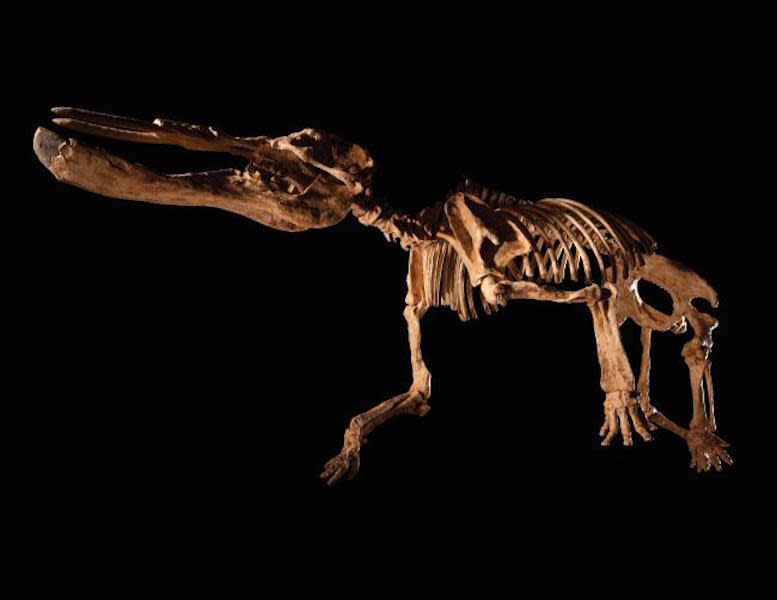Is Jurassic World Dino-Mite?

Photo Courtesy of Houston Museum of Natural Science
I remember seeing Jurassic Park when I was a kid and being so freaked by the lifelike dinosaurs, I was terrifed when left alone. To me, every toenail resembled the slashers the raptors sported, and I was afraid to use the bathroom because I thought I would meet the same demise of that one guy on the toilet. Flash-forward 22 years, and we have another installment of the dino film series in Jurassic World, which opened last weekend to damn good box office numbers.
Starring Bryce Dallas Howard and a svelte and swarthy Chris Pratt, Jurassic World dazzles moviegoers with high-tech special effects and freaky hybrid dinosaur species (as if dinosaurs weren't already cool enough). Obviously, this is a Hollywood lab–cooked tale meant to get meat in the seats (like the aforementioned guy on the toilet in Jurassic Park). Obviously. But, just in case, we thought we'd consult an expert.
Can creating a new hybrid dinosaur be done, and can we in fact create the most badass of all theme parks? "The answer is no." That's the Houston Museum of Natural Science's James E. Washington III, Museum Interpreter for the Morian Hall of Paleontology, and a dinosaur fanatic since Jurassic Park hit theaters in 1993. "I know some scientists are noted for trying to reverse-engineer bird embryos with teeth and added tail vertebra," he adds, "but the true dinosaurs of old are 'pre-history.'" Hearing this wasn't a shocker, of course, but a part of me was kind of bummed. I had always secretly imagined myself one day getting a sno-cone at Jurassic World before heading over to the velociraptor cages.
Speaking of v-raps, remember that insanely well-choreographed scene in Jurassic Park when the two youngsters get held up in the kitchen and scurry about like baby mice? Those raptors show genius-level smarts, even figuring out how to open doors. And in the new film, the vest-wearing Chris Pratt becomes the raptors' leader, forming probably the coolest squad in all history, pre- or current. So, did dinosaurs really have that much brains? "Giving an animal those added abilities without any evidence make us (tour guides) all cringe," says Washington. "At least once a month on my tour, I have to break the news to a museum guest those traits were frankly made up."
What about my childhood nightmare in animatronic form, the Dilophosaurus? In Jurassic Park, homeboy spews oily venom from his face after his opulent neck fans frill out, creating in me the need to shower with the curtain open in case he was coming my way. "I would have to say the Dilophosaurus tops the charts," says Washington. "It is depicted as being smaller"—you mean it was BIGGER?—"having a neck frill and spitting venom-all things that are unconfirmed for that species." Oh, thank God.
As a whole, the film series serves its purpose of reviving a kind of wonder, in audiences young and old, about dinosaurs, something Washington enthusiastically supports. "Anything that gets the public interested in dinosaurs or science as a whole is welcomed," he says. As for me, I can finally cut the night-light off and enjoy a popcorn fest filled with awesome special effects, not-as-scary-as-I-thought pre-historic animals, and worry-free showers.




